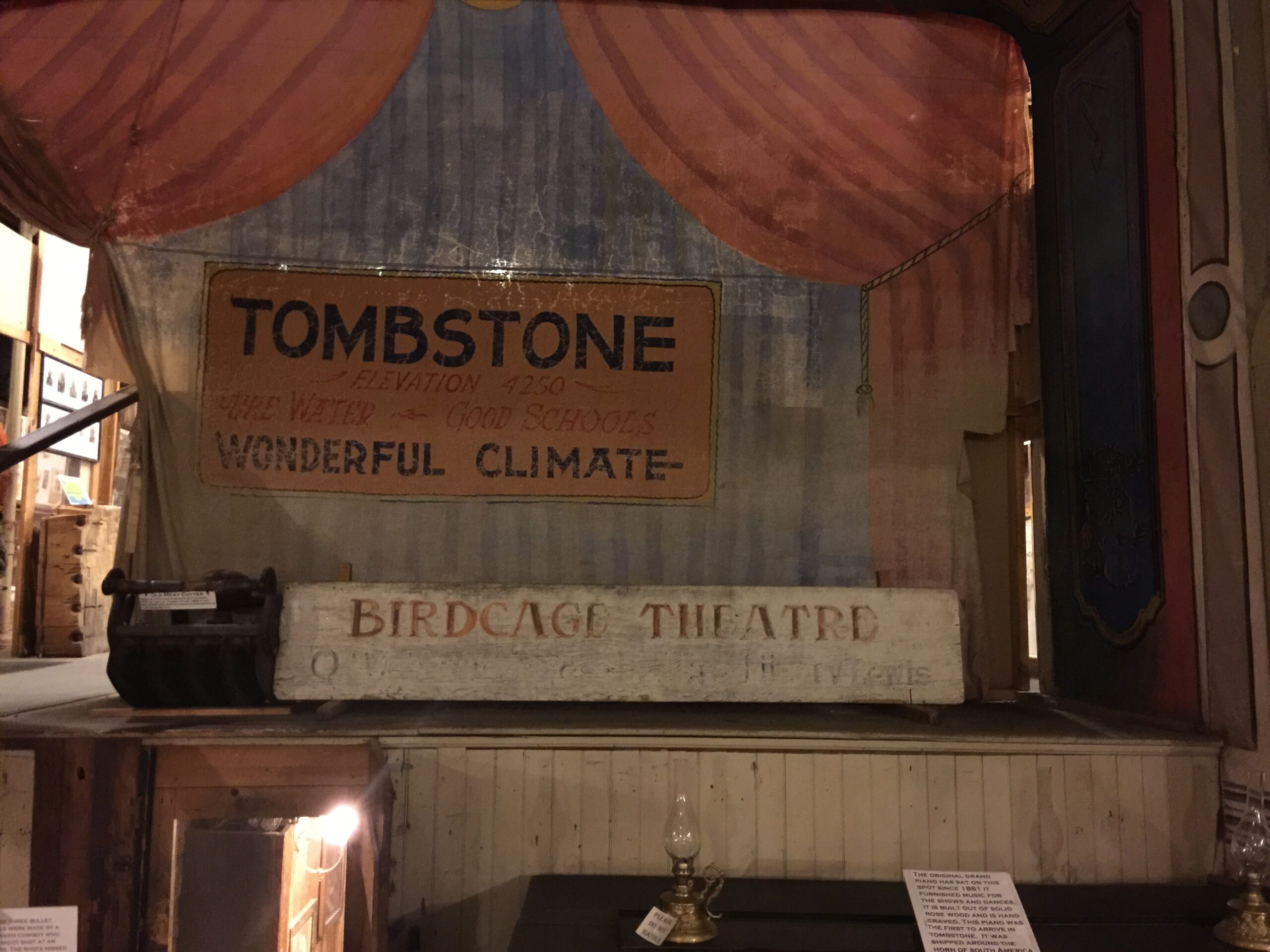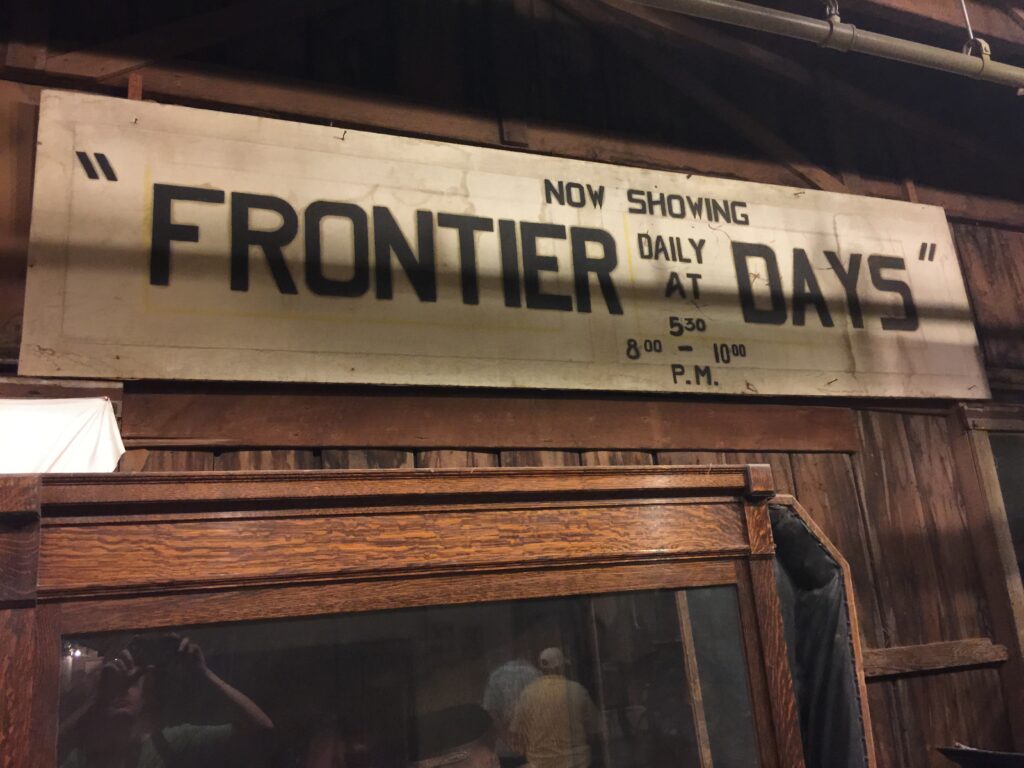
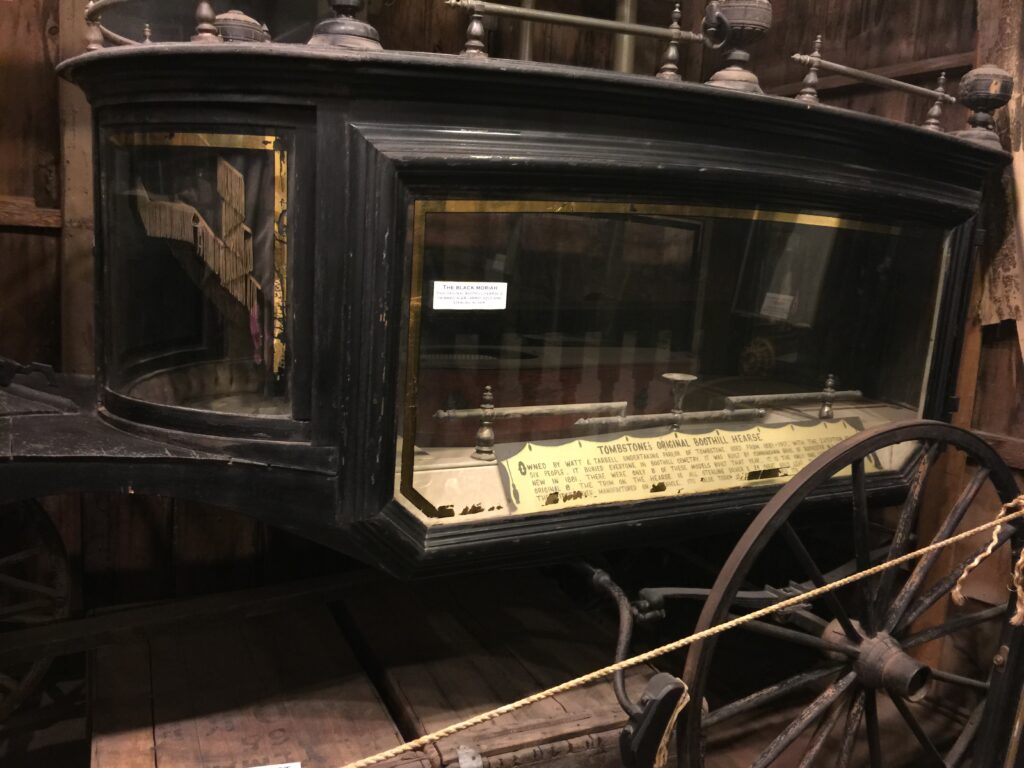
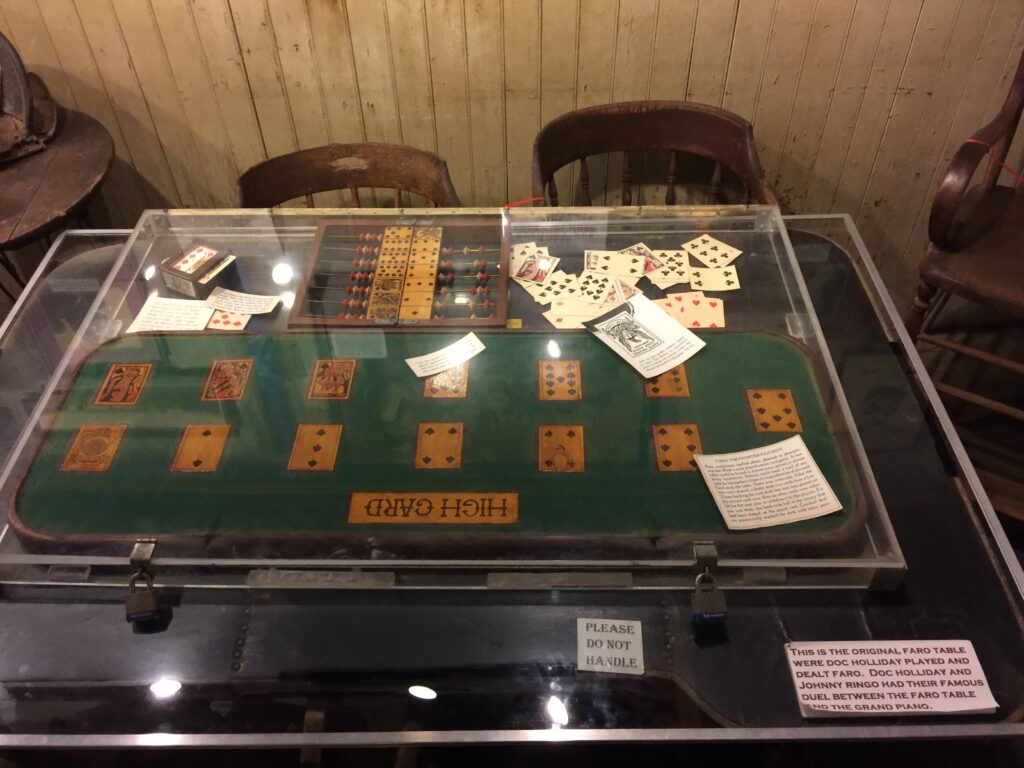
A sun-drenched desert. Throat-parching dust blowing in a breeze so hot it only aggravates one’s discomfort, not alleviates it.
A scraggly tumbleweed drifts across the sandy road, the classic cinematic cue of an impending Wild West showdown.
Colt .45s drawn… Wyatt Earp, Doc Holliday, Virgil and Morgan Earp, the McLaurys and the Clantons… the O.K. Corral…
Tombstone, Arizona.
We all know the story.
Several years ago, while driving back to Los Angeles after a road trip to Texas to visit my in-laws, my wife and I decided to stop in Tombstone. We fully expected the renowned town to be completely cheesy and a total tourist trap, but what the hell? The kids would have fun even if we were left rolling our eyes. And we weren’t wrong. The town did indeed throw up for display all that touristy kitsch, reenactments, and whatnot that we expected… but we also discovered a locale that was so much more than that one famous shootout involving some of the legendary names of the Old West.
One of those lesser discussed but more fascinating landmarks in Tombstone is the Bird Cage Theatre, supposedly one of the most haunted places in America.
Since the Bird Cage used to be a saloon as well as a stage for initially “highfalutin” and later baser entertainment fare, it thus qualifies as a haunted whiskey place.
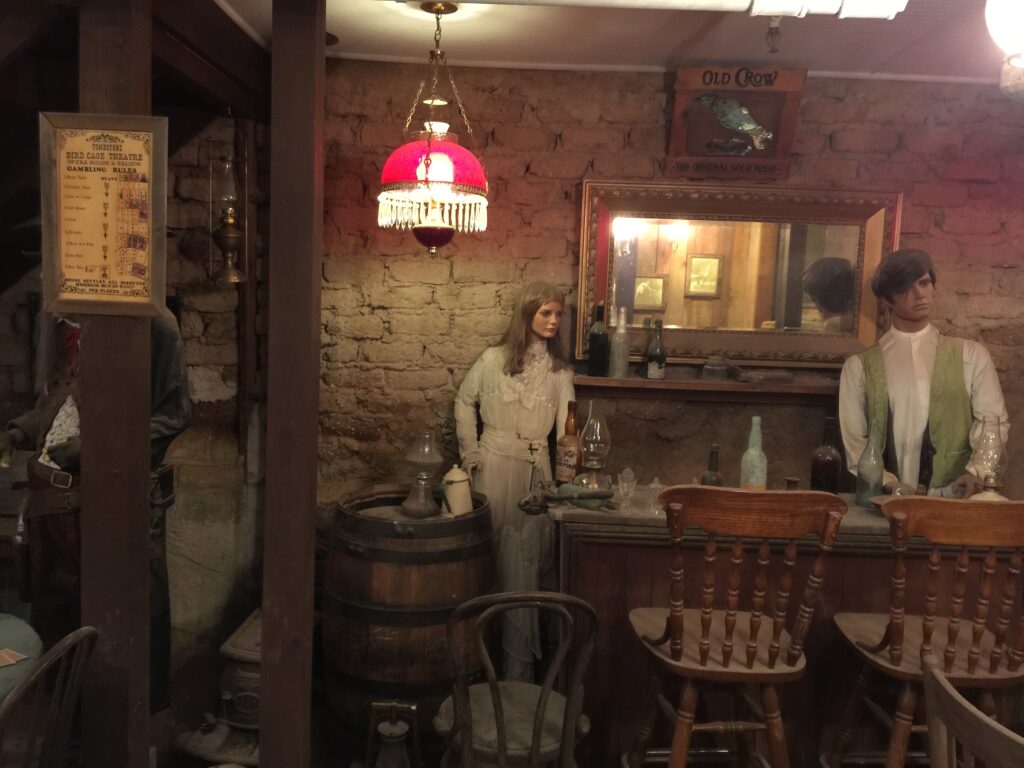
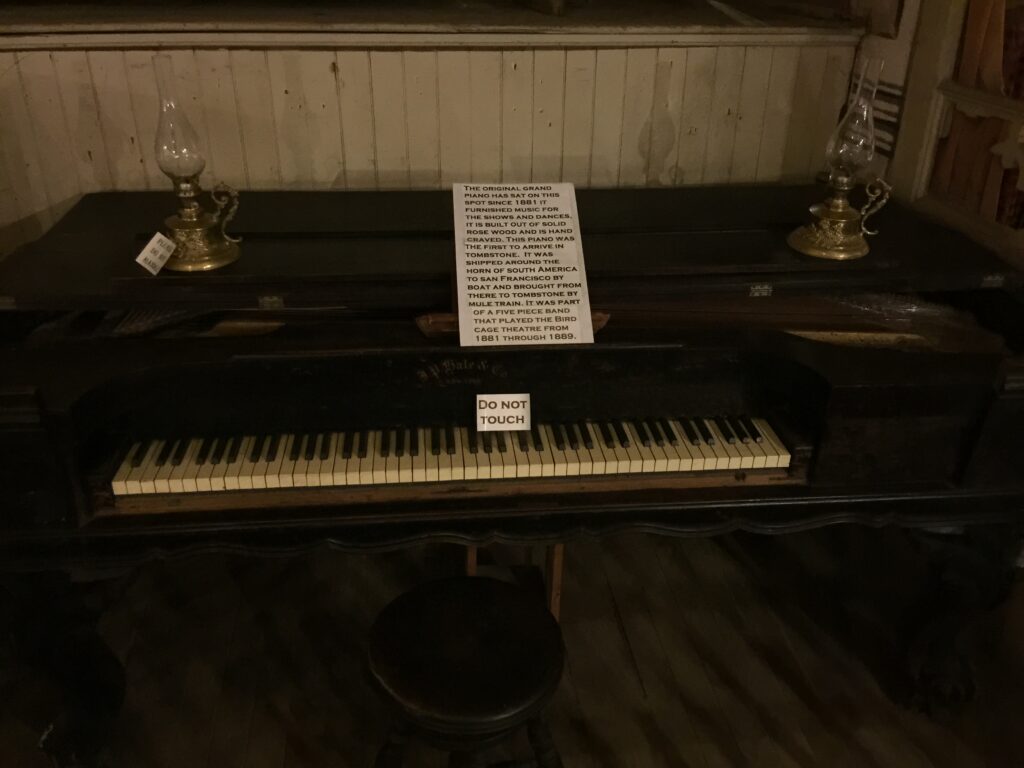
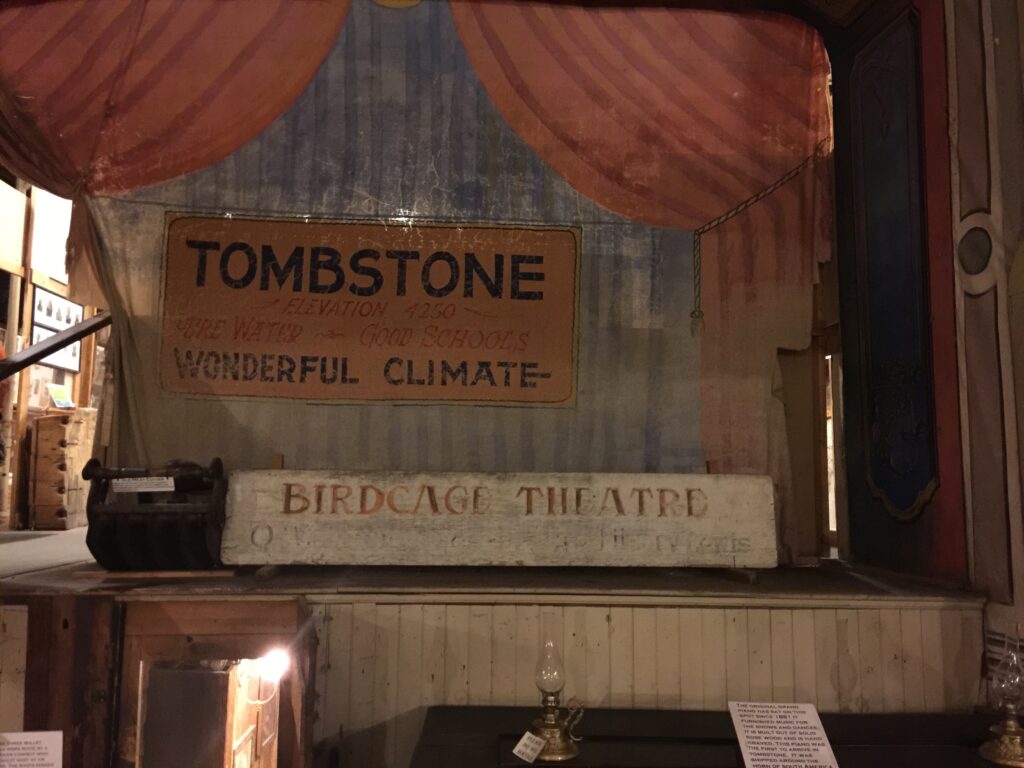
Lottie and William Hutchinson opened the Bird Cage Theater on December 26, 1881, two short years after Tombstone was founded and only two even briefer months after that tiny incident at the O.K. Corral. Hutchinson, a former variety performer, had hoped to put on “respectable” family shows such as were popular in large cities at the time. But Tombstone was a silver-mining boomtown, and the miner’s taste lay otherwise. The Bird Cage’s entertainment soon evolved into other arenas both on and off the stage, and the theater flourished with the population surge of hopeful prospectors,
On stage, magic, wrestling, comedy, and carnival-style performers brought in crowds, but the real action took place off the stage. Prostitutes worked the balcony boxes of the theater. Downstairs, the longest poker game in recorded history took place in the theater’s basement, running continuously 24/7 for eight years.
The buy was a mere $1,000–which would be approximately $30,000 after inflation today. Not light stakes, but considering what striking a wealthy silver vein might deliver to the lucky prospector, let alone the professional gamblers and others of questionable means who patronized the theater, apparently not that unusual. The Bird Cage even included a saloon on premises, and this being the Old West, whiskey was the beverage of choice.
A rough crowd, gambling, alcohol, prostitution, fortunes literally being won and lost daily in a lawless Wild West city… the Bird Cage Theater saw its share of unsavory action. Several murders took place on the property, not that such violence deterred patrons from continuing to frequent the joint. During its heyday, everybody who was anybody who spent time in Tombstone visited the Bird Cage, including those legendary lawmen about whom you may have heard a tale or two.
But when the silver ran dry, so did Tombstone’s population, and the Bird Cage shuttered in 1892.
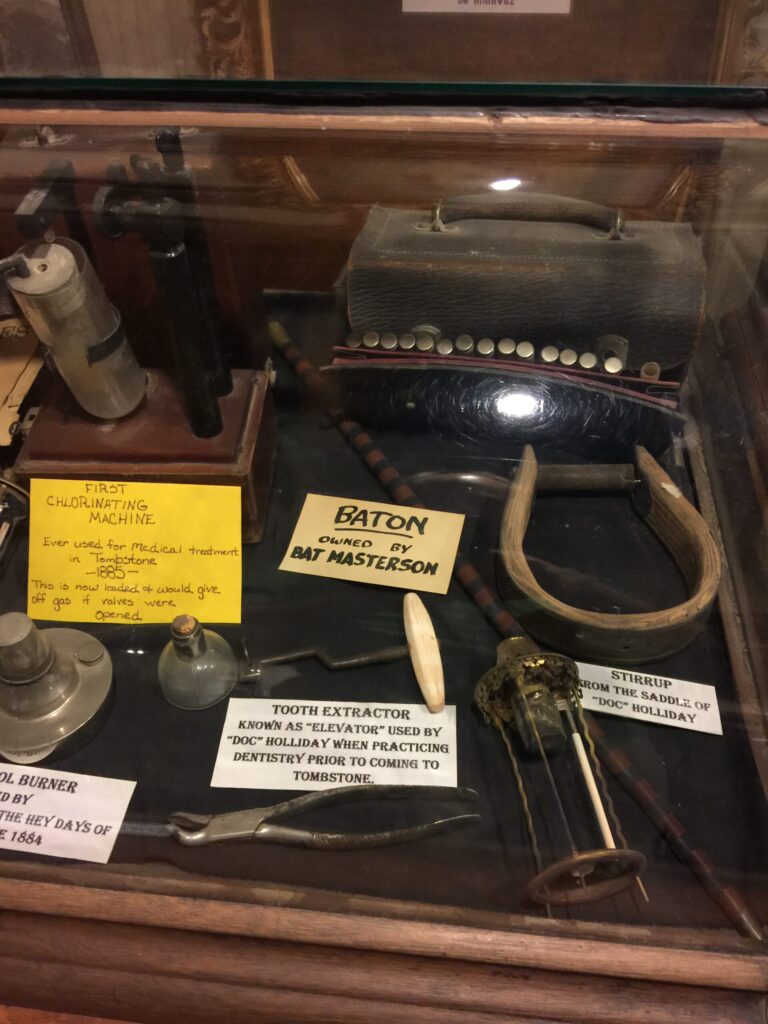
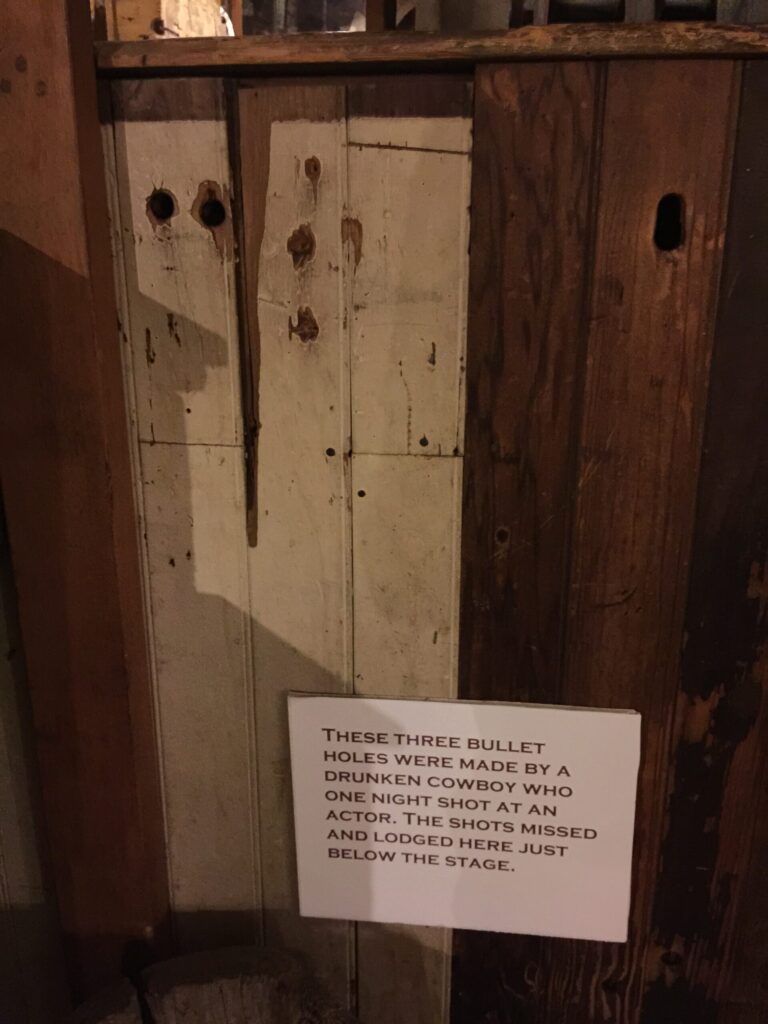
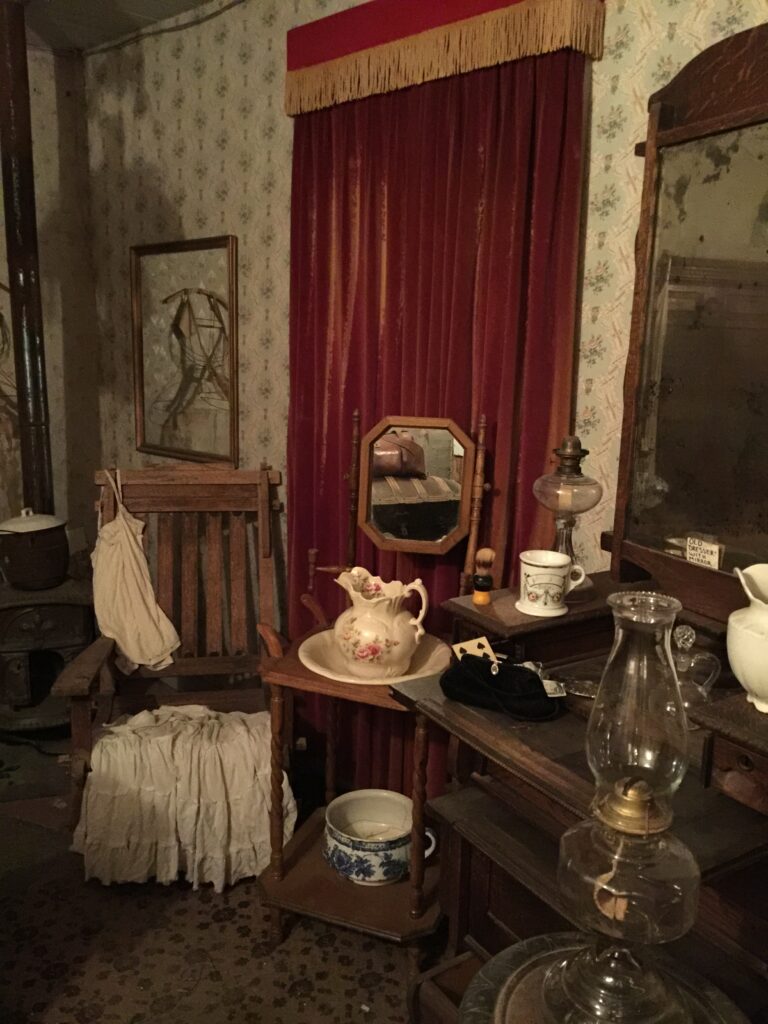
Today, the Bird Cage Theater is a museum to that semi-romantic image of the so-called lawless West–an image frequently fabricated and made out to be worse than it actually happened to be, but in the case of Tombstone, surprisingly accurate. Bullet holes still riddle the walls, never patched over or filled in. Relics of Tombstone’s past, many original to the Bird Cage itself, fill the entirety of the venue and provide a genuine glimpse into yesteryear, with delightfully (and appropriately) handmade–sometimes even hand-lettered–placards describing their provenance. On the flip side and decidedly less authentic in feeling are the mannequins helming the bar behind a mockup of the neverending poker game in the basement.
Somehow the place works. It would be easy for it to fail, to feel too staged, too touristy, but the dusty and grime and original artifacts with minimally produced labeling and the overall distinct lack of restoration work together to leave modern patrons feeling like they have stepped back in time.
And, of course, the theater is alleged to be haunted, by no less than twenty-six ghosts and the occasional scents of whisky and tobacco wafting through the air. How could it not be, with its sordid history of dubious goings-on, even murder?
Alas, I smelled no whiskey on my visit. I would have enjoyed that. Just the stale odor of age-old dust. Nor did I hear the music or carousing or any of the other sounds purported to catch tourists occasionally unaware. To be fair, I perused the venue during daytime and not the supposedly more active nighttime. After all, my not yet school-age daughters were in tow.
That having been said, my wife and I did catch something unusual on our phones’ cameras (more specifically, her phone’s camera). While standing next to each other we simultaneously decided to shoot photographs. Mine, aimed higher and zoomed in, resulted in nothing special, just a memento of the trip.
Her shot, wider and lower down, captured a small green orb floating in space at the bottom of the frame.
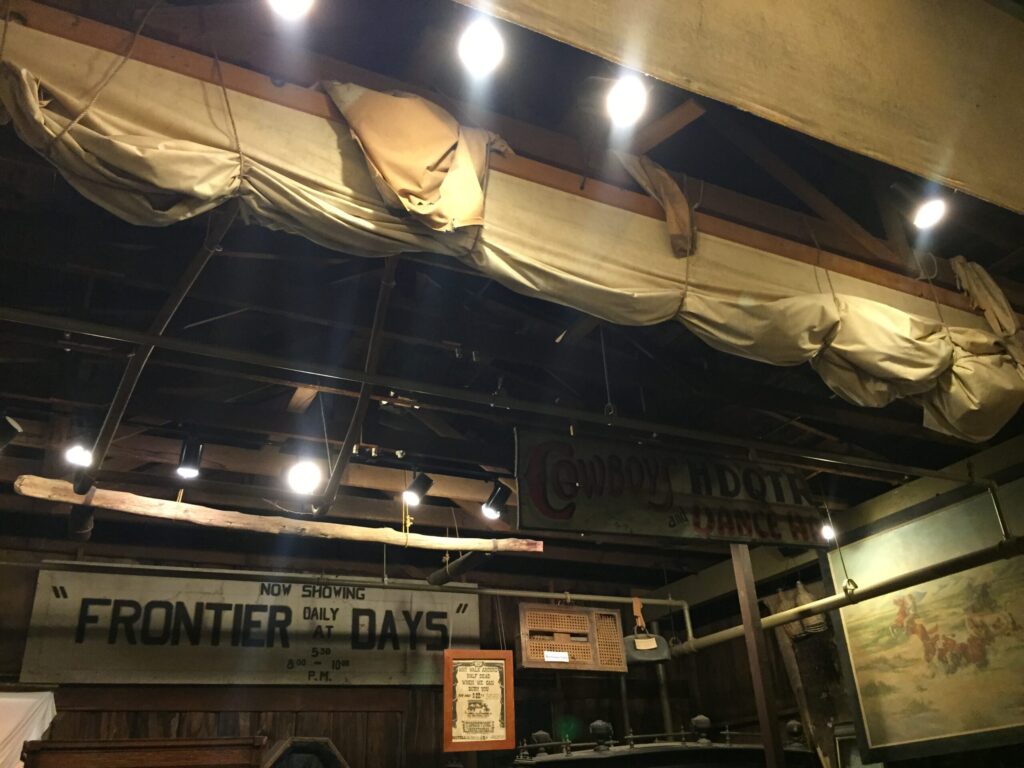
I am a filmmaker; I know lighting. There was absolutely nothing in that room that should have generated that orb. No flash. No glass covering an artifact to cause an odd reflection. Nothing even angled in such a manner that could have landed on a random dust particle in just the right (or would it be wrong?) way. Lights do flare in the picture, but the angles of incidence should not have caused that particular distortion at that particular area of the frame.
I can’t explain it, but there it is. I won’t claim the orb is paranormal, but it sure is unusual. You can decide for yourself. If I ever return, I’ll aim to try that nighttime tour, and if I do, maybe I’ll even catch a whiff of that whiskey. Eight years and counting later, the kids would love that, too.
All photos courtesy of Nate & Debra Barlow

